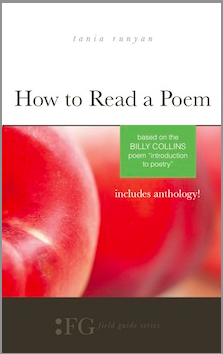
Teow Lim Goh tells the story of the Chinese and the American West.
Two great waves of immigration occurred in the United States beginning in the 1840s. The first was the Irish, driven by the Great Potato Famine. The potato blight eventually eased, but Irish immigration continued; many were greeted by army recruiters during the Civil War – as soon as they stepped off the boat.
The second wave arrived beginning in the late 1840s, driven by unfavorable conditions at home and potential wealth offered by the California Gold Rush. This wave was the Chinese, who kept coming through the 1850s, and 1860s, and beyond. They helped to build the Transcontinental Railroad and worked in the mines of Wyoming, Colorado, and Montana.
In the East, the Irish often faced discrimination. In the West, the Chinese faced discrimination and violence.
Epic poetry isn’t exactly the fashion in literary circles these days, but match good poetry with a good story, and I suspect no one will mind whether its epic or not. This is what Teow Lim Goh has done with Bitter Creek: An Epic Poem. I don’t know how else one could tell this story poetically other than in an epic framework.
And what a story she tells.
Bitter Creek is an overall epic poem told in a series of short poems. The focus is on the 1870s and 1880s, years after the completion of the Transcontinental Railroad in 1867. The scene for the Chinese has shifted to the mines in the mountains further east. Chinese workers have been brought in to do menial and often dangerous jobs. Everything seems fine on the surface, until the mine owners begin to cut wages and use Chinese laborers to replace strikers.
Goh tells the story by grouping short poems together in sections – strikebreakers, roads to exclusion, labor unions like the Knights of Labor, the struggle, and the demand that the Chinese must go, often accompanied by violence. And she tells the story from all perspectives – the Chinese themselves, the white employees, the mine owners and their managers, prostitutes, and others who are part of the era and the conflict.
The Chinese workers had come, not so much to make a new life in a new country as to work to send money to their families back home. Goh captures the confusion, the loneliness, the fear, and the anxiety of these men in different ways, including letters back home.

December 1875
Rock Springs, Wyoming
It’s a strange place out here. Not snowy
like the mountains
or stormy like the sea.
It’s a desert of broken rock.
And it is cold.
We live in wooden huts.
Winds seep through the cracks.
The white men are hostile.
I don’t know what happened, but soldiers
escorted us when we arrived.
Company guards protect us in the mines.
But I’m getting paid, finally.
Here’s my first paycheck, as I promised.
I don’t think I can stay here long, but the money is good.
I want to see you all again.
The story culminates on Sept. 2, 1885, when “Chinatown” in Rock Springs, Wyoming is attacked and burned to the ground. The final entry in the epic is the communication from the Chinese consul in New York, listing the names of the people killed in the violence.
Goh has told a history of these immigrants, but she’s also treated the other parties fairly. This isn’t a story of “whites vs. Chinese” as it is a story of how mine owners played off the immigrants against their white workers, using the Chinese to lower wages, break strikes, and force all of the workers to undertake dangerous jobs.

Teow Lim Goh
The entire epic is based upon extensive research, including investigations of the massacre, newspaper reports, historical accounts, the 1880 census, Wyoming state archives, and scholarly articles. She explains that no letters, journals, or reports by the Chinese workers themselves are known to exist; she turned to contemporary historical accounts and Chinese poetry clubs from the early 20th century.
Goh is a poet and essayist who continues to study and recover the histories of Chinese immigrants in the American West. She previously published two poetry collections, Islanders (2016) and Faraway Places (2021), and an essay collection, Western Journeys (2022). She lives in Denver.
Bitter Creek is a riveting tale; I read it the first time in one sitting. The final poem, that listing of the dead, is exactly that – a list. But it packs an emotional wallop. This is a story that needs to be told, and Goh has told it very well indeed.
Photo by Mobilus in Mobili, Creative Commons, via Flickr. Post by Glynn Young.
How to Read a Poem uses images like the mouse, the hive, the switch (from the Billy Collins poem)—to guide readers into new ways of understanding poems. Anthology included.
“I require all our incoming poetry students—in the MFA I direct—to buy and read this book.”
—Jeanetta Calhoun Mish
- “Your Accent! You Can’t Be from New Orleans!” - October 9, 2025
- Poets and Poems: Donna Vorreyer and “Unrivered” - October 7, 2025
- Poet Sidney Lanier and the Lost Cause - October 2, 2025

Sandra Fox Murphy says
I enjoyed this read, Glynn, and the excerpt from Goh’s poem. How written and oral stories are the keepers of our histories. Your piece also immediately reminded me of Kelli Estes’ novel, The Girl Who Wrote in Silk, inspired by the Chinese Exclusion Act, 1882, and the attempts to purge Chinese from Seattle. Thanks for sharing.